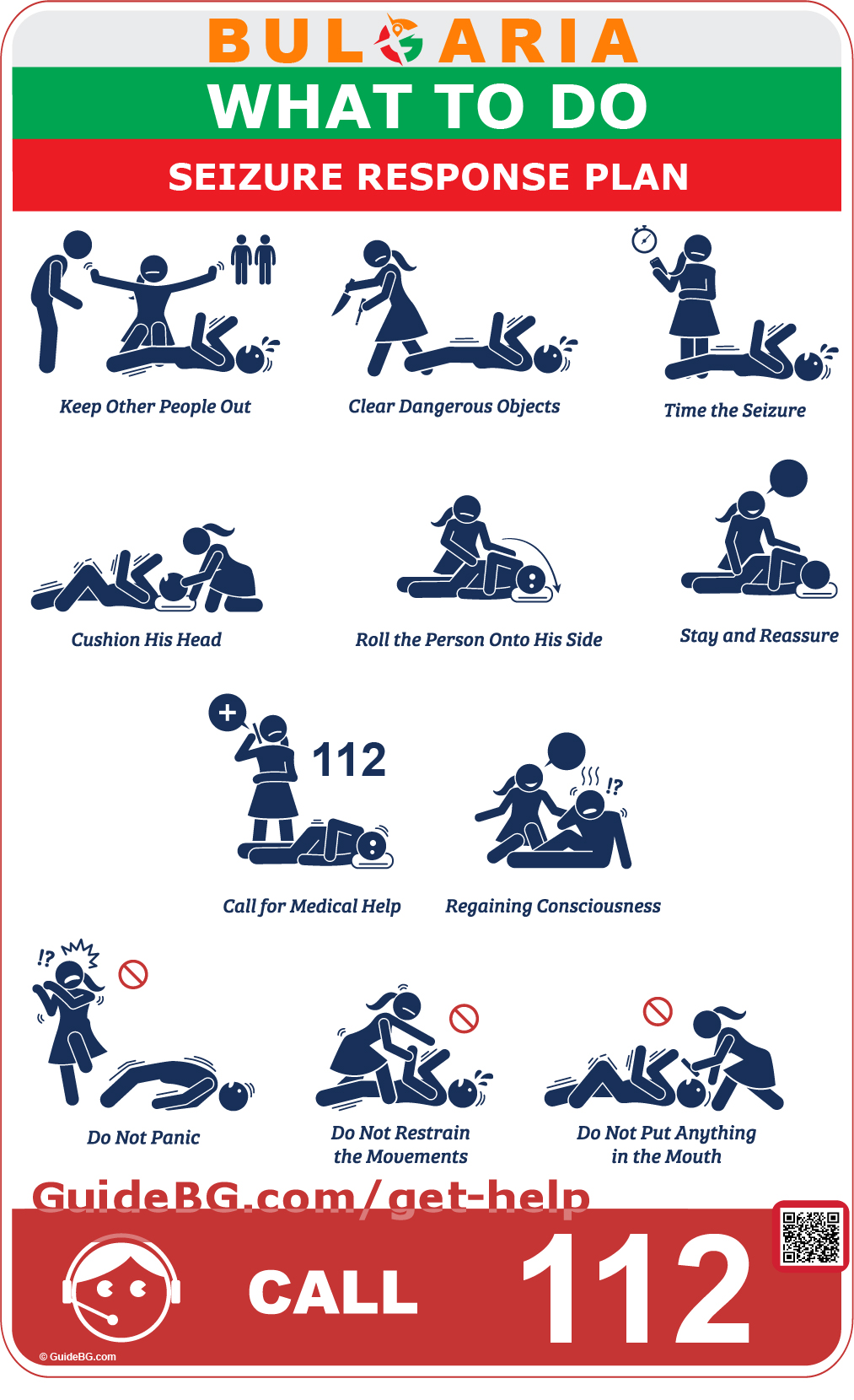A seizure response plan is crucial for ensuring the safety and well-being of individuals experiencing seizures. Here’s a step-by-step guide that emphasizes the importance of each action.
Keep Other People Out
Start by keeping bystanders away. This reduces stress for the person and prevents crowding.
Clear Dangerous Objects
Remove sharp or hard objects. This prevents injury during the seizure.
Time the Seizure
Note the seizure’s start time. Timing helps doctors understand the seizure’s severity and type.
Cushion the Person’s Head
Place something soft under their head. This protects against head injuries.
Roll the Person onto His Side, Body Recovery Position
Turn them gently to their side. This position keeps the airway clear, reducing choking risk. Check how to manage the body recovery position.
Stay and Reassure, Talk to the Person
Remain with them, offering calm reassurance. This helps reduce confusion and fear as they recover.
Call for Medical Help, Call 112, or Ask Others to Call
If an episode lasts more than 5 minutes or another episode follows quickly, seek emergency assistance. Immediate medical attention may be necessary.
Try to Regain the Person’s Consciousness
Gently speak to them, encouraging awareness. This aids in a smoother recovery.
Do Not Panic
Stay calm. Your composed presence can make a significant difference in managing the situation effectively.
Do Not Restrain the Movement
Allow the seizure to take its course without trying to stop the movements. Restraining can cause injury.
Do Not Put Anything in the Mouth to Prevent Choking
Contrary to myth, people cannot swallow their tongues during a seizure. Inserting objects can cause harm. If a person is choking – consult the Choking First Aid guide.
Following these guidelines can significantly assist someone experiencing a seizure, ensuring their safety until the seizure passes or medical help arrives. Understanding and preparation are critical to effectively responding to situations like this one.
Seizure or Fainting?
To distinguish between a seizure and fainting, follow these steps:
Check for Convulsions
- S: Look for jerking movements or muscle stiffening.
- F: Convulsions are rare and, if present, are usually brief and not as intense.
Notice Eyes and Head Position
- S: Eyes may roll upwards; the head might turn to one side.
- F: No specific eye or head movement pattern.
Evaluate Duration
- S: It lasts from a few seconds to several minutes.
- F: Brief, usually a few seconds.
Observe Consciousness
- S: The person may experience a sudden loss of consciousness but doesn’t typically “wake up” immediately after the event.
- F: The person regains consciousness quickly, usually within a minute or two.



